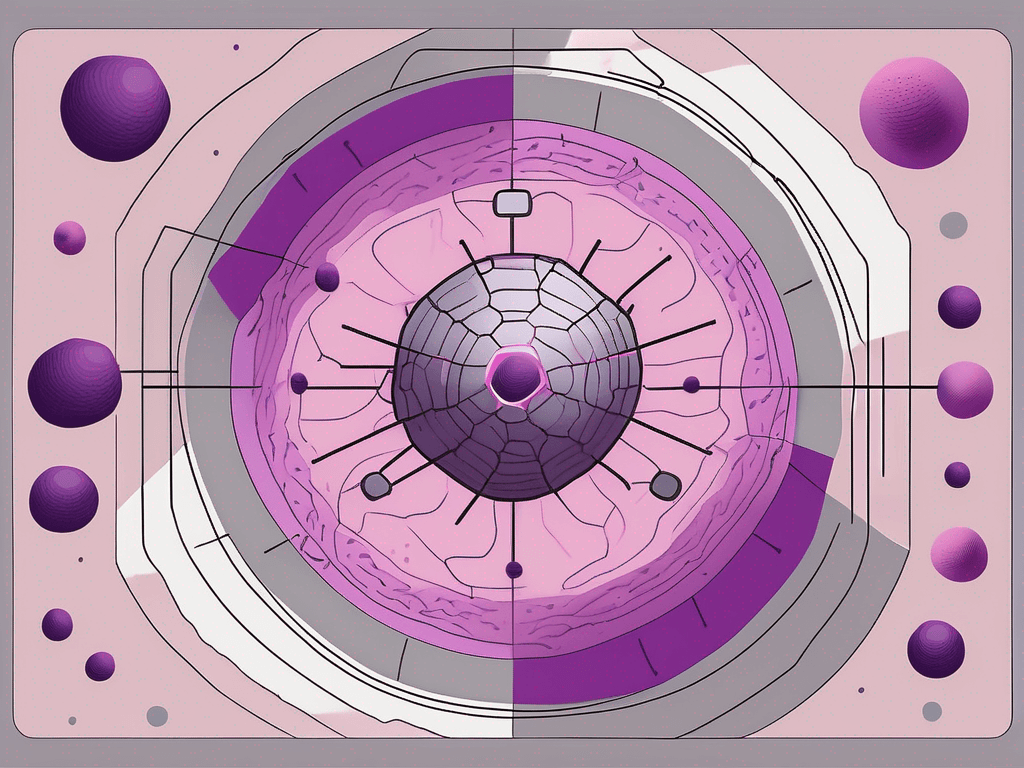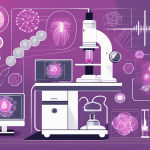Prostate cancer is a prevalent health concern, but understanding its stages and treatment options is crucial. This comprehensive article explores proton therapy, an innovative treatment modality that precisely targets tumors while sparing healthy tissues. Learn about the anatomy of the prostate, the stages of prostate cancer, common symptoms, and diagnosis methods. Discover how proton therapy differs from traditional radiation and its benefits, including reduced side effects and increased treatment effectiveness. Whether you’re facing prostate cancer or supporting someone who is, this article provides valuable insights to make informed decisions about treatment.
Prostate cancer is a serious health concern affecting men worldwide. It is essential to understand the intricacies of this disease to navigate the treatment options available. One of the most innovative and cutting-edge treatment options for prostate cancer is proton therapy. In this article, we will delve into the world of proton therapy, exploring its benefits, process, and how it compares to other treatment options. If you or someone you know is facing prostate cancer, this information will help you make informed decisions regarding your treatment plan.
Understanding Prostate Cancer
The prostate is a small gland located below the bladder and in front of the rectum. Its primary function is to produce seminal fluid, which nourishes and transports sperm. Unfortunately, this vital gland is susceptible to cancer, which can be life-threatening if not detected and treated early.
Prostate cancer progresses through different stages, ranging from localized to metastatic. Early detection is crucial in successful treatment and increasing the chances of long-term survival.
The Anatomy and Function of the Prostate
Before delving deeper into prostate cancer, let’s take a moment to understand the anatomy and function of the prostate. The prostate is roughly the size of a walnut and surrounds the urethra, the tube responsible for carrying urine and semen out of the body. It is composed of several types of cells, including glandular cells that produce seminal fluid and muscle cells that help with ejaculation. Understanding the prostate’s location and function helps us comprehend the impact of prostate cancer and the importance of targeted treatments like proton therapy.
In addition to its role in reproduction, the prostate also plays a part in regulating urine flow. The muscles surrounding the prostate help control the release of urine, ensuring proper bladder emptying and preventing urinary retention. This dual functionality highlights the significance of maintaining prostate health and promptly addressing any abnormalities.
The Different Stages of Prostate Cancer
Prostate cancer is staged based on the extent and spread of the tumor. The stages range from I to IV, with stage I being the least advanced and stage IV being the most advanced. Each stage determines the treatment options available and the prognosis. It is vital for individuals and their healthcare providers to understand the stage of prostate cancer accurately to develop an effective treatment plan.
Stage I prostate cancer is typically localized, meaning the tumor is confined to the prostate gland and has not spread to surrounding tissues or lymph nodes. As the cancer progresses to stage II, it may start to invade nearby tissues but still remains within the prostate. In stage III, the tumor may extend beyond the prostate, potentially affecting nearby organs or structures. Stage IV prostate cancer indicates that the cancer has spread to distant sites in the body, such as bones or lymph nodes.
Understanding the different stages of prostate cancer helps healthcare professionals determine the appropriate treatment approach. Treatment options may include surgery, radiation therapy, hormone therapy, chemotherapy, or a combination of these modalities.
Common Symptoms and Diagnosis Methods
Prostate cancer can manifest through various symptoms, such as urinary difficulties, frequent urination, blood in urine or semen, or erectile dysfunction. However, it’s important to note that these symptoms can also be caused by other health issues, making prostate cancer diagnosis complex.
Several diagnostic methods can help identify prostate cancer, including a digital rectal examination (DRE), prostate-specific antigen (PSA) blood test, biopsies, and imaging studies. During a DRE, a healthcare provider inserts a gloved, lubricated finger into the rectum to feel for any abnormalities in the prostate. The PSA blood test measures the levels of a protein produced by the prostate, which can be elevated in the presence of cancer. Biopsies involve obtaining tissue samples from the prostate for microscopic examination, providing a definitive diagnosis. Imaging studies, such as ultrasound, magnetic resonance imaging (MRI), or computed tomography (CT) scans, may also be used to visualize the prostate and assess the extent of the cancer.
Early detection through routine screenings plays a crucial role in catching prostate cancer in its early stages, enabling more treatment options. It is recommended that men discuss prostate cancer screening with their healthcare providers to determine the appropriate timing and frequency of screenings based on their individual risk factors.
An Introduction to Proton Therapy
Proton therapy is a cutting-edge treatment modality that specifically targets tumors while minimizing damage to healthy tissues. It utilizes protons, which are positively charged particles, to administer radiation therapy. Proton therapy’s precision and ability to conform to the shape of the tumor make it an ideal option for treating prostate cancer.
The Science Behind Proton Therapy
Proton therapy works by directing a beam of protons to the tumor, delivering a high dose of radiation. Unlike traditional radiation therapy, which uses X-rays, proton therapy releases its energy at the tumor site, minimizing radiation exposure to surrounding healthy tissues. This targeted approach reduces the risk of long-term side effects and provides better outcomes for patients.
The Evolution of Proton Therapy in Oncology
Proton therapy has rapidly evolved over the years, becoming increasingly sophisticated in its ability to precisely target tumors. Technological advancements, such as pencil beam scanning and image-guided radiation therapy, have improved treatment accuracy and patient comfort.
Furthermore, research continues to assess the effectiveness of proton therapy in treating various types of cancer, including prostate cancer. These advancements open new possibilities for patients seeking personalized and effective cancer treatment.
How Proton Therapy Differs from Traditional Radiation
Unlike traditional radiation therapy, which utilizes X-rays that pass through the body, proton therapy’s unique characteristic allows it to deposit most of its energy within the tumor tissue. This precise targeting reduces the radiation dose to healthy tissues surrounding the tumor.
The ability to spare healthy tissues is particularly advantageous in prostate cancer treatment, as it minimizes side effects such as urinary incontinence and erectile dysfunction. This precision also allows for higher doses of radiation, improving the chances of eradicating cancer cells.
Proton Therapy for Prostate Cancer Treatment
When it comes to prostate cancer treatment, proton therapy offers several benefits that make it an appealing option.
The Process of Proton Therapy for Prostate Cancer
The process of proton therapy typically involves multiple treatment sessions, known as fractions. Each fraction is administered daily, with a typical treatment duration of several weeks.
Before commencing treatment, a thorough evaluation and planning phase is completed. This includes imaging scans to precisely delineate the tumor and healthy tissues. The treatment team uses advanced computer software to create a customized treatment plan, ensuring the tumor receives the optimal dose while sparing healthy tissues.
The Benefits of Using Proton Therapy
Proton therapy offers numerous benefits for prostate cancer patients. Firstly, its precise targeting reduces the risk of damage to surrounding organs, minimizing side effects. This precision also allows for a higher dose of radiation, potentially increasing treatment effectiveness.
Additionally, proton therapy has shown promising outcomes in preserving quality of life, with a lower occurrence of urinary issues and sexual dysfunction compared to other treatment modalities. Furthermore, proton therapy has a lower risk of secondary cancers, a concern often associated with traditional radiation therapy.
Potential Side Effects and Risks
While proton therapy has demonstrated reduced side effects compared to traditional radiation, it is crucial to acknowledge that every individual responds differently to treatment. Potential side effects may include fatigue, skin reactions, and temporary urinary or bowel changes.
Discussing potential side effects and managing expectations with your healthcare team is vital. They will provide personalized guidance and support throughout your treatment journey.
Comparing Proton Therapy to Other Treatment Options
When considering prostate cancer treatment options, it is essential to explore and compare different modalities to make informed decisions.
Proton Therapy vs. Surgery
Proton therapy offers a non-invasive alternative to surgical treatment for prostate cancer. While surgery removes the entire prostate gland, proton therapy precisely targets the tumor, minimizing damage to surrounding tissues. Proton therapy is particularly beneficial for individuals who wish to avoid potential surgical complications.
Proton Therapy vs. Traditional Radiation
Proton therapy and traditional radiation therapy both aim to eradicate cancer cells. However, proton therapy’s precision and ability to spare healthy tissues make it an attractive option. Traditional radiation therapy may result in more side effects and long-term complications, making proton therapy a compelling alternative.
Proton Therapy vs. Hormone Therapy
Hormone therapy is often used in combination with other treatments for prostate cancer, such as radiation or surgery. While hormone therapy aims to shrink the tumor by reducing testosterone levels, proton therapy directly targets the tumor with radiation. The choice between the two depends on the individual’s specific case and the recommendation of their healthcare team.
Proton therapy for prostate cancer is an exciting and promising treatment option that provides precise targeting while minimizing side effects. It offers hope and improved quality of life for patients facing this challenging disease. Consulting with healthcare professionals and exploring all available options empowers individuals to make the best decision for their specific situation. Remember, you are not alone in this journey, and with advances like proton therapy, there is hope for successful treatment and a brighter future.






